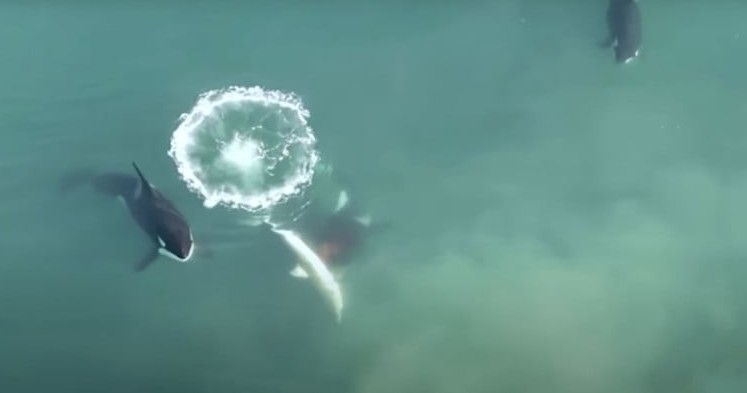A shocking new marine miracle has been recorded in the Gulf of California, Mexico. Orcas have been observed stalking chick great white harpies for their nutrient-rich livers, a gesture noway proved in Mexican waters.
Drones and aquatic cameras captured these extraordinary moments, showing orcas flipping youthful harpies onto their tails, converting temporary palsy.
This tactic, known as alcohol immobility, allows the bloodsuckers to prize the liver without being injured by the wolf’s important jaws.
Orcas’ Unique Hunting Technique
In August 2020, a group of five womanish orcas attacked a juvenile great white wolf, removing its liver before eating it. Two times later, a similar event occurred with another youthful wolf.
Erick Higuera, a marine biologist, explained: “This temporary state renders the shark defenseless, allowing the orcas to extract its nutrient‑rich liver…”
The repeated targeting of juvenile harpies in the same area suggests a shift in the original ecosystem and shows how adaptable orcas are as bloodsuckers.
The Impact on Great White Sharks
Juvenile great white Harpies now face a new trouble. This stalking strategy adds pressure on their populations, especially as orcas specialise in flipping the harpies to pierce their livers.
Marine experts punctuate that understanding this bloodsucker-prey commerce is pivotal. Drone footage has revealed not only the fashion but also the orcas’ intelligence and perfection in hunting apex bloodsuckers like the great white wolf.
Why This Matters Globally?
While these events are in Mexico, the counteraccusations reach the global marine ecosystem. Shifts in bloodsucker geste can affect wolf populations and the balance of the abysses worldwide.
For conservationists and experimenters, it’s a reminder that apex bloodsuckers like orcas are constantly conforming, which could impact how we cover species like the great white wolf.






